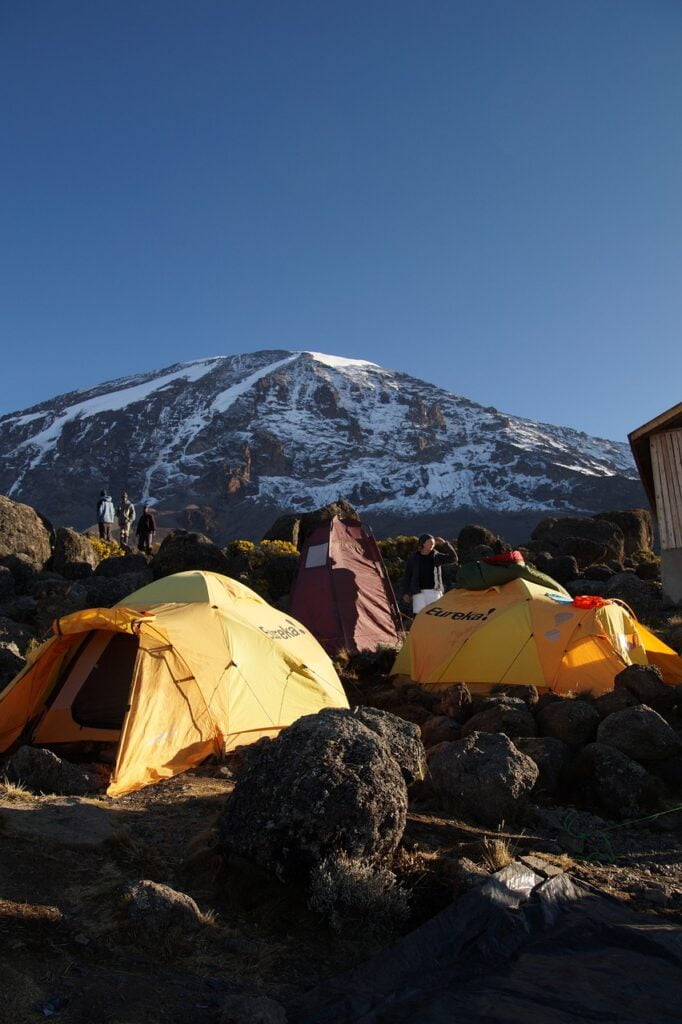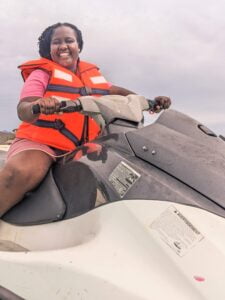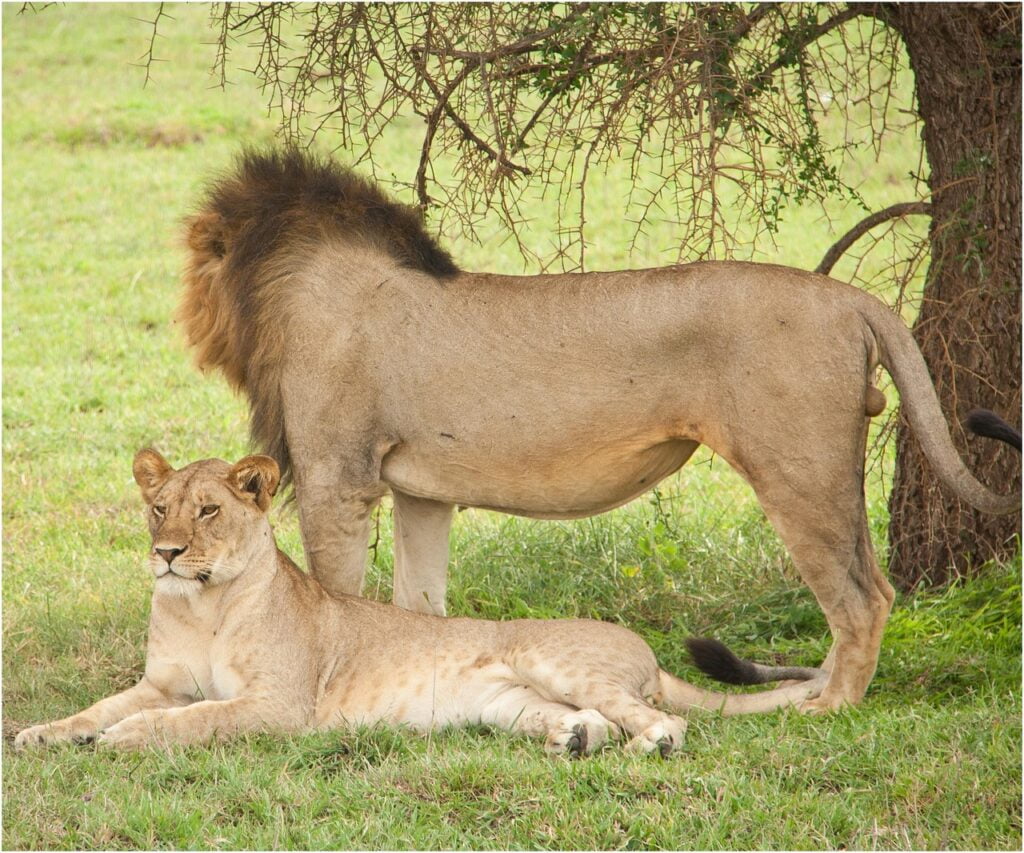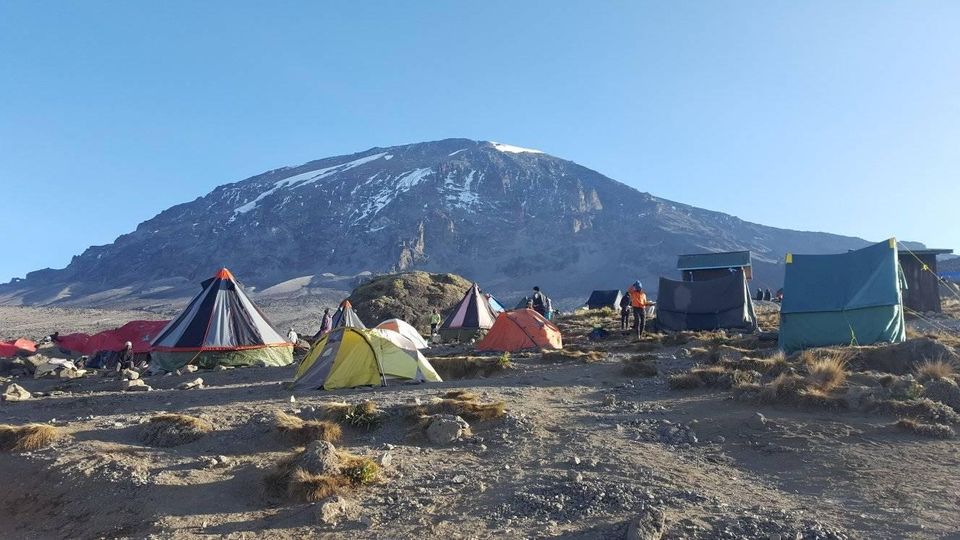Kilimanjaro 6 Days Machame Route: The Challenging Yet Scenic Path to Uhuru Peak
The Kilimanjaro 6 Days Machame Route is a more demanding yet rewarding adventure, offering breathtaking views as you trek through diverse ecosystems—from lush rainforests to high-altitude deserts and rocky alpine terrain. Known for its scenic beauty and challenging nature, this route is perfect for adventurers seeking a faster-paced trek to the summit. Over six days, you’ll traverse through rich landscapes, experience incredible sunrises, and ultimately reach Uhuru Peak, Africa’s highest point at 5,895 meters.

Call to Action:
Are you ready to challenge yourself on one of the most scenic routes to Africa’s highest peak? Book your Kilimanjaro adventure via the 6 Days Machame Route with Safari Experience Africa today and make memories that will last a lifetime! Contact us to start planning your climb!
Kilimanjaro 6 Days Machame Route Itinerary:
Day 1: Moshi to Machame Gate to Machame Camp
Your Kilimanjaro adventure begins with a drive from Moshi to Machame Gate, where you will register and start your ascent. The hike takes you through dense rainforest, with towering trees and abundant wildlife. The trek can be slippery, but the surrounding flora and fauna make the journey through this humid zone a vibrant start to your climb. After approximately 5-7 hours of trekking, you will arrive at Machame Camp, nestled above the forest at 2,835 meters.
Day 2: Machame Camp to Shira Camp
On Day 2, you leave behind the rainforest and venture into the moorland zone. This day’s trek is a steep climb but offers rewarding views of the Shira Plateau and Kibo Peak. The vegetation begins to thin out, and the landscape becomes more barren, filled with giant lobelias and senecios. After trekking for around 4-6 hours, you reach Shira Camp, where you’ll spend the night under the vast African sky.
Day 3: Shira Camp to Lava Tower to Barranco Camp
This crucial acclimatization day begins with a long trek to Lava Tower, standing at 4,600 meters. The environment shifts dramatically as you pass through semi-desert and rocky landscapes. After a brief rest at Lava Tower, you’ll descend to Barranco Camp, which lies at 3,960 meters, offering stunning views of the towering Barranco Wall. The climb high, sleep low approach aids acclimatization, helping your body adapt to the altitude.
Day 4: Barranco Camp to Barafu Camp
A thrilling start to the day sees you scaling the Barranco Wall, a near-vertical rock face that looks intimidating but is very manageable with the help of your guides. Once at the top, the path flattens, allowing you to enjoy spectacular views of the glaciers above. After crossing several ridges and valleys, you arrive at Barafu Camp at 4,640 meters, your base for the summit push. This day is long, with trekking times between 7-9 hours, but it’s a vital stage in your journey to the top.
Day 5: Barafu Camp to Uhuru Peak to Mweka Camp
Summit day begins at midnight under a star-lit sky. The ascent to Uhuru Peak is challenging, taking you to Stella Point before the final push to the summit at 5,895 meters. As you reach the top, you’ll be rewarded with a breathtaking sunrise over Africa, marking your achievement of conquering the continent’s highest peak. After a brief celebration and photo opportunities, you begin the descent back to Barafu Camp and continue down to Mweka Camp, where you will rest for the night.
Day 6: Mweka Camp to Mweka Gate
The final stretch of the trek takes you back through the rainforest to Mweka Gate. The descent is gentle compared to previous days, allowing you to reflect on your incredible journey. After about 3-4 hours of trekking, you will reach the gate, where you will receive your Kilimanjaro climbing certificate and be transported back to Moshi for a well-deserved rest and celebration.
Kilimanjaro Tour Inclusions & Exclusions
Tour Inclusions:
- All park fees and permits
- Professional mountain guides and support staff
- Quality tents and camping equipment
- Meals during the trek (breakfast, lunch, dinner)
- Accommodation before and after the trek
- Transfer to and from Kilimanjaro International Airport
- First aid kit and emergency oxygen
Tour Exclusions:
- International flights and visas
- Personal gear and equipment (e.g., sleeping bags, trekking poles)
- Tips for guides and porters
- Travel insurance
- Optional excursions or additional activities
FAQs for Kilimanjaro 6 Days Machame Route:
1. How difficult is the 6-day Machame Route?
The Machame Route is moderately difficult. It requires good physical stamina due to its steep paths and shorter acclimatization period compared to the 7-day option.
2. How long is the daily trek on this route?
Most days involve 5-7 hours of trekking, with the summit day being the longest, taking around 10-14 hours.
3. Is this route suitable for beginners?
While no technical climbing skills are needed, the Machame Route is more suitable for those with some trekking experience due to the steep and varied terrain.
4. When is the best time to climb Kilimanjaro on this route?
The best months to climb are during the dry seasons from January to early March and from June to October.
5. How do I prepare for this climb?
It’s important to engage in physical training that includes aerobic exercises like running or cycling, along with hiking to improve endurance and strength.
6. What is altitude sickness, and how can I avoid it?
Altitude sickness occurs when your body cannot adjust to lower oxygen levels at higher altitudes. The Machame Route’s “climb high, sleep low” approach helps mitigate this risk, but it’s important to take it slow and stay hydrated.
7. What should I bring for the climb?
Essentials include warm clothing, a good pair of hiking boots, a sleeping bag, and personal items like sunscreen, sunglasses, and energy snacks. Gear can also be rented in Moshi before your trek.
8. How cold does it get on the summit?
Temperatures at the summit can drop to as low as -20°C (-4°F), especially during the night. Proper layering and warm gear are essential.
9. Can I use my phone during the trek?
While cell service is available at some points on the mountain, it is not reliable. Bringing a power bank is recommended if you plan to use your phone for pictures or communication.
10. What is the tipping practice for guides and porters?
Tipping is customary at the end of the trek. It’s recommended to budget around $200-300 per climber for the entire team, which includes guides, cooks, and porters.
Build Your Trip

Tour Expert
Contact Our Expert To Plan Your Trip Today
Top Destinations in Africa


